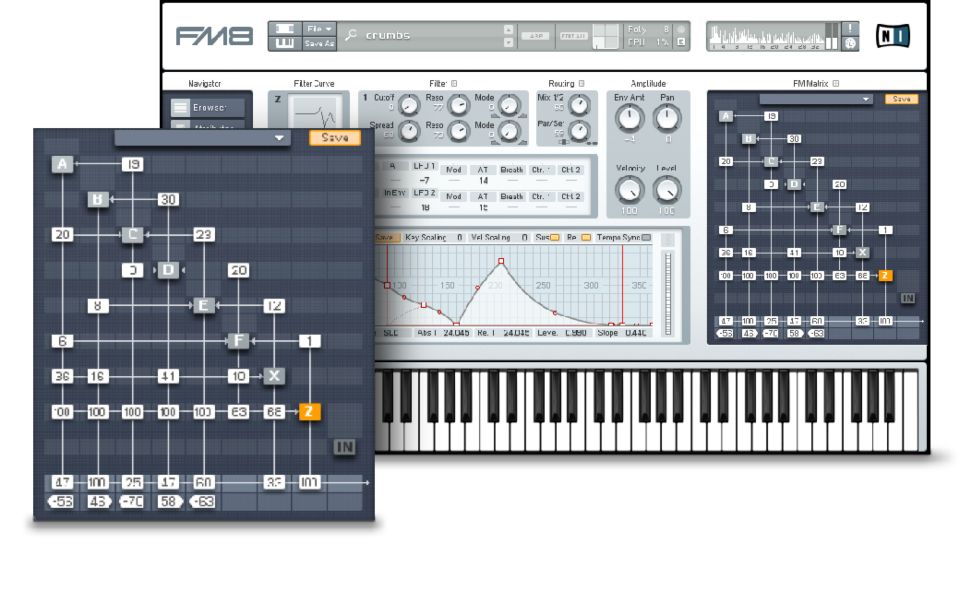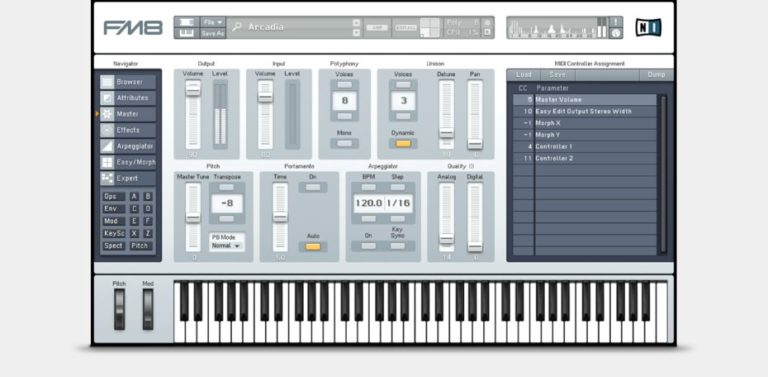


Once you have it loaded, you will probably want to hear some of the many presets included with FM8.
#FM8 PLUGIN OFFLINE#
It does require an internet connection to download and activate it, but it can be used offline from then on. On the Mac, you will need OS X 10.10 or higher (64-bit only), Core 2 Duo CPU (or higher), and four gigabytes of RAM. For the PC, you’ll need Windows 7 or higher (32 or 64-bit), Core 2 Duo CPU (or higher), and four gigabytes of RAM. The requirements for installing FM8 are easily satisfied. With that out of the way, let’s check it out. I will however try to cover the more important features. This is a complex synth with a wealth of options, so it is next to impossible to cover everything within a regular review. You can also import patches from the famous hardware synth. It includes a powerful matrix for the operators, unison, sound morphing, an arpeggiator, twelve effects, and 960 presets. FM8 was released in 2007 with many new and improved features. It was originally released as FM7 way back in 2002. I thought it would be a perfect candidate for our Oldies but Goodies column, seeing as it is a classic synth plugin that has been around for quite some time.
#FM8 PLUGIN SOFTWARE#
Now that you have some historical background on the original hardware synthesizer, I will move on to Native Instruments’ software synthesizer called FM8. The 32 algorithms for the operators gave it a wide range of audio possibilities, along with a velocity-sensitive keyboard that also included aftertouch. The operators can be either a modulator or a carrier, and they are aligned in various configurations that form the basis for the sound that is created. Its FM is a system of sine wave “operators” that can generate new sounds by interacting with each other. It used FM (frequency modulation) synthesis to create its sounds. It might not have been the easiest to program, but the sounds it made were unlike many others at that time. The DX7 by Yamaha was a very popular 16-voice digital synthesizer that was originally released back in 1983. Does Native Instruments’ powerful FM8 stand the test of time? We take a look at a classic emulation of a very popular synthesizer from the early 1980s.


 0 kommentar(er)
0 kommentar(er)
